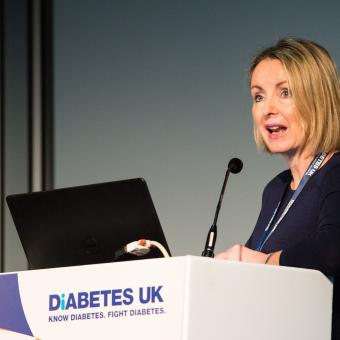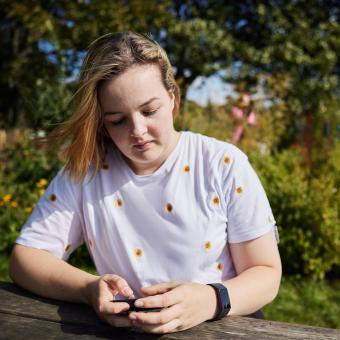Having type 1 diabetes means having to act as your pancreas 24/7. Working out the amount of insulin you need depending on what you eat, what you’re doing and how you’re feeling.

The idea of creating an artificial pancreas to remove some of this load has existed since the 1960s. And we’ve been pioneering research into this technology since the beginning.
Making the artificial pancreas a reality
In 1977, we funded the UK’s first artificial pancreas. Professor Sir George Alberti used the technology to manage blood sugar levels in people with type 1 diabetes during surgery and childbirth.
A year later, we funded his team to test the first insulin pump. His research showed it helped people living with type 1 diabetes to improve their blood sugar levels and led to the first pumps becoming available in 1985.
Now tens of thousands of people use insulin pumps to manage their diabetes.
In 2007, we backed a trial by Professor Roman Hovorka to test the impact of people using the artificial pancreas – also known as a hybrid closed-loop – in their everyday lives.
Those taking part spent 14% more time with their blood sugar levels in the ideal range, proving the technology could transform the management of type 1 for the better.
We then supported a decade of world-first studies to develop and test the technology for pregnancy, led by Professor Helen Murphy. The research showed the artificial pancreas was safe and could help pregnant women with type 1 diabetes better manage their blood sugar levels throughout pregnancy, resulting in safer births and healthy babies.
Professor Helen Murphy, University of East Anglia, said:
“Diabetes UK funding was instrumental to develop and then test the artificial pancreas in pregnancy and get us to the stage we are now. When you take those learnings from the lab and see the benefits for mums and babies with your own eyes, it comes alive in much more meaningful ways.”
Looking to the future

In 2023, thanks to decades of research, the NHS published draft guidelines recommending thousands of people with type 1 diabetes should have access to this technology.
Now we want people with type 2 to benefit from this technology too. That’s why we funded Professor Hovorka’s trial in 2018, which showed it could help people with type 2 in hospital spend 25% more time with blood sugars in target range.
And to get us closer to a day where no-one living with diabetes must think like their pancreas, we’re focusing our attention on next-generation insulins through the Type 1 Diabetes Grand Challenge. Insulins that respond quicker to rising blood sugars after a meal and could bring us closer to a true fully closed loop artificial pancreas.
Alyssa Faulkner, who lives with type 1 diabetes and uses hybrid closed loop technology, said:
“When I was at university, I was really struggling to control my blood sugars, and feeling really low about it. But the hybrid closed loop has helped me massively. It has acted as my safeguard, helping me to live independently and continue doing the things I love.
"I feel proud of how I manage my diabetes now and I’m forever grateful for the technology.”
